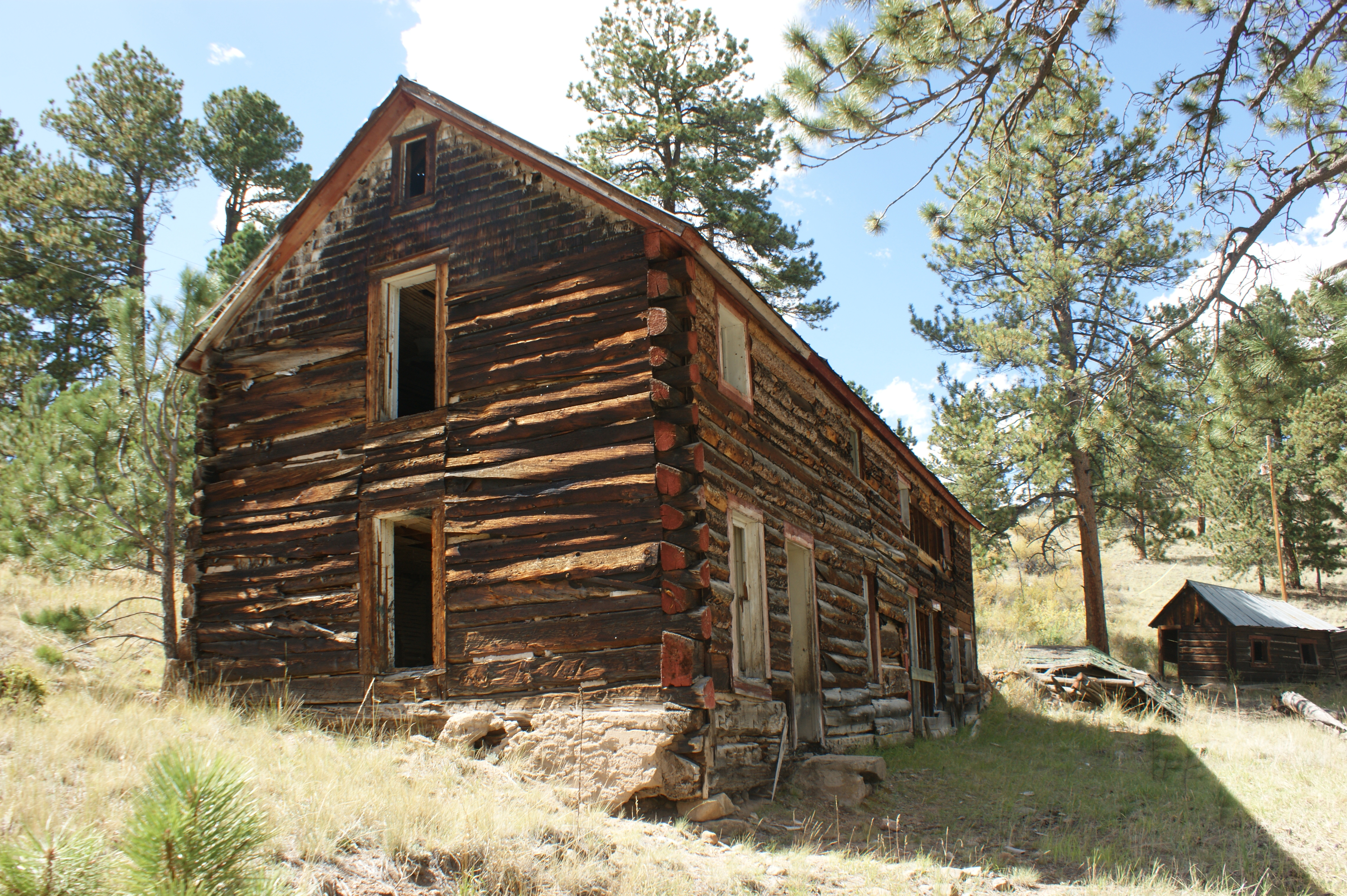National and State Register
Deatherage/Gibbs Place
Park County
The Deatherage/Gibbs Place consists of a two-story log house, collapsed workshop, generator house, two cisterns, and a depression where a privy equipped with a three-hole board seat once stood. The original log bay of the house may date to 1890, a time when the site functioned both as a ranch and a timber operation. Later, possibly between 1899–1913, the house doubled in size with the addition of an equal-sized bay of frame construction.
The two-story log cabin and its outbuildings perch on a hillside among ponderosa pine and aspen trees in the Pike National Forest, about a mile southwest of the Shawnee Historic District in northern Park County. Logging, mining, settlement, and ranching activities increased dramatically in the area beginning around 1860. With the advent of the mining industry and the development of railroads came a steady demand for wood. The arrival of the Denver, South Park & Pacific Railway in 1878 facilitated the shipment of goods. Trains also brought recreationalists to the area, which was a popular fishing and summer community as early as the 1880s and remains an adventurer’s haven today.
The Deatherage/Gibbs Place’s two stories distinguish it from most buildings of Pioneer Log construction, which stand at one story. The materials comprise native logs used in the original log bay, plus milled lumber and unpeeled log siding, likely sourced locally, used to build the newer frame bay. The complex has withstood many periods of change and adaptation, having served as a ranch and logging homestead, a farmhouse, and a summer cabin. Unsubstantiated rumors claimed it had also been a hotel.
The two outbuildings were probably built around the same time as the house, although the different materials and techniques suggest the reuse of logs from earlier structures. Distinguishable from the round nails apparently used to construct the generator house, broken square nails in some of the same structure’s logs provide clues as to the their reuse. A barn and other agricultural buildings once stood in the distance, and historic documents also mention a long-gone “milk house,” through which cool water from the 1887 Callaghan irrigation ditch flowed.
In 1891 Ralston B. Deatherage, who had arrived in Park County in about 1890, filed a claim for this 160 acres of land, which he soon sold to his mother, Catherine Deatherage. Months after Ralston Deatherage filed his claim, he and half-brother Oliver Callaghan agreed to supply the Denver Paper Mill Company with cut logs, mules, wagons, and equipment, and to allow the establishment of a sawmill. In December 1896, a crew member shot and killed Oliver Callaghan, who was working as foreman of a small wood camp near the sawmill, which was presumably elsewhere on the Deatherage property.
Deatherage sold the land to Milton Gibbs, a neighboring homesteader and Civil War veteran who had arrived in Colorado in 1884. Gibbs moved to the ranch with his family in 1899 and likely used Deatherage land for grazing or growing hay prior to purchasing it in 1900. The Gibbs family owned about twenty-five to fifty head of stock and about five or six horses. Although the Gibbs’s land and belongings were eventually auctioned off, they continued to reside here until soon after Milton’s death in 1909. A military headstone marks his grave atop a hill on the property’s westernmost reaches.
The property continued to change hands—a total of eight times after Deatherage’s original ownership—and was even leased to a bootlegger during Prohibition. The rustic log house has been heavily vandalized since the US Forest Service (USFS) purchased the site in 1977. Nevertheless, the workmanship still speaks to the mountain construction culture of early settlers—hewn logs, notched corner joints, and simple construction techniques.

